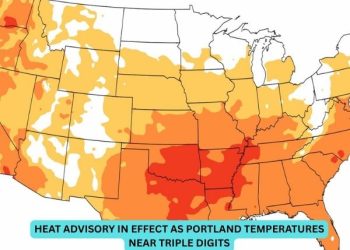A newly emerging COVID-19 variant, NB.1.8.1, is beginning to spread in the United States and other parts of the world, prompting health officials to step up monitoring ahead of a potential summer surge in cases.
What Is NB.1.8.1?
This Article Includes
-
NB.1.8.1 is a descendant of the Omicron variant, first identified in January 2025.
-
It has already spread across 22 countries, including the U.S., Europe, Asia, and Australia.
-
The World Health Organization (WHO) has labeled it a variant under monitoring (VUM) due to its mutations that may enhance transmissibility.
Rapid Growth in Cases
According to the WHO, NB.1.8.1 made up:
-
2.5% of COVID-19 cases globally in early April 2025.
-
10.7% by late April (epidemiological week 17).
In the U.S., case detections have been confirmed in:
-
Washington State (14 confirmed cases in early June)
-
California
-
Virginia
-
New York
-
Ohio
-
Rhode Island
-
Hawaii
These detections primarily occurred through airport screenings of international travelers.
What Makes NB.1.8.1 Different?
-
The variant may spread more easily due to mutations that allow it to evade immunity from vaccines or prior infections.
-
So far, there is no evidence suggesting it causes more severe illness than previous variants.
-
Symptoms are consistent with Omicron subvariants:
-
Fever
-
Sore throat
-
Congestion
-
Body aches
-
Fatigue
-
Do Vaccines Still Work?
Yes. According to the WHO:
“Current vaccines are expected to remain effective against symptomatic and severe disease caused by NB.1.8.1.”
The CDC continues to recommend:
-
COVID-19 vaccination for all adults
-
Consultation with pediatricians for children aged 6 months–17 years
Are We Heading Toward a Summer Surge?
Health officials are cautiously watching NB.1.8.1, which could contribute to a seasonal rise in infections. Though it’s not yet dominant, it could soon surpass other variants like LP.8.1, which is currently declining but still the most prevalent in the U.S..
As of June 3, 2025:
-
COVID infections are rising in 6 states
-
Declining in 14 states
-
Stable in 25 states
How to Stay Safe
To prepare for a possible summer uptick:
-
Stay updated on vaccinations
-
Wear masks in crowded indoor spaces, especially if you’re high-risk
-
Keep hand sanitizer handy
-
Monitor symptoms and isolate if sick
-
Follow local health guidance on testing and treatment
Key Takeaway
While NB.1.8.1 is not yet a major threat, its rapid spread and mutation profile make it one to watch. Authorities are urging the public to remain vigilant, not alarmed, as summer approaches.











